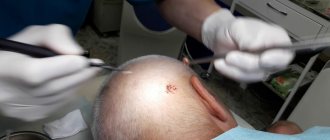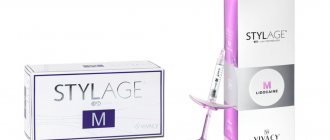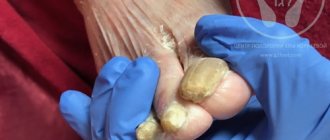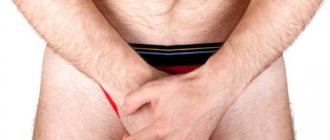Blepharoplasty (literally translated as eyelid surgery (from the Greek word “Blepharon” - eyelid). This surgical intervention, which involves the correction of age-related changes in the upper and lower eyelids, involves delicate excision of excess skin, as well as correction of fatty and muscle tissue.
Natalya Romanyutina, doctor - Art Clinic surgeon says:
“It will not be a secret that our eyes, like the mirror of the soul, are able to reveal a little of our inner world. Human facial expressions, especially in the eye area, will forever remain a miracle and a mystery to me. It seems so incredible to me that the precision of muscle contractions, elusive micro-movements that convey the unique, unique range of personal feelings and emotions inherent in each person. But, unfortunately, due to such complex functional and anatomical and physiological characteristics, the periorbital region is the most sensitive and the first to undergo age-related changes.”
These changes include loss of volume due to redistribution of the subcutaneous fat layer, progressive thinning of bone tissue, and decreased elasticity and skin tone.
There are also a number of negative factors that aggravate the inevitable age-related changes:
- chronic diseases
- hormonal and metabolic changes,
- smoking, alcohol, toxic drugs,
- psychological stress, depression,
- lack of sleep,
- chronic fatigue,
- working and living conditions,
- ultraviolet radiation,
- unbalanced diet,
- Heredity, gender, improper care of the area around the eyes, as well as constant exposure to gravity
Who is recommended for blepharoplasty?
If you are concerned about one of the problems listed below, then blepharoplasty will be the right way to solve them:
- sagging skin of the upper eyelid
- swelling caused by the presence of fatty deposits on the eyelids;
- bags under the eyes, tired appearance (fatty hernias);
- drooping corners of the eyes (sad look);
- excess skin in the lower eyelid area;
- deep wrinkles around the eyes;
- damage to the skin of the eyelids due to trauma and birth defects.
Preparing for blepharoplasty
I recommend starting with an in-person consultation. The plastic surgeon will see the overall picture and will be able to assess the condition of the skin and make recommendations. Consultations take place in Zaporozhye and Dnieper. I accept patients from all cities of Ukraine - Dnieper, Kherson, Lugansk, Donetsk.
We offer our out-of-town patients a combination of consultation, examination and surgery in 1 day! This is very convenient and also saves a lot of time.
Before the intervention, the patient undergoes tests - a general blood test, as well as coagulation tests. Based on the results, a decision is made to conduct it.
At what age is it recommended to have blepharoplasty?
Many patients ask this question. But there is no exact age period when this operation is necessary. Each person has his own special facial anatomy, unique facial expressions, his own genetic history, in the power of which he is. Everyone’s life develops differently, which means living conditions, occupational hazards, eating habits, sleep and rest, bad habits, and ultimately our state of mind. All these factors make noticeable adjustments to the appearance.
Some people at 50 years old do not feel any need to change anything in their appearance, while others at 35, once opening their eyes, cannot recognize their usual image in the reflection. There is a feeling that their changing face no longer matches their inner sense of self, disharmony arises.
Therefore, the indication for blepharoplasty is not the numbers in the passport, but an internal feeling of discomfort and objective anatomical changes requiring correction.
Restrictions
A number of restrictions and prohibitions appear already at the testing stage. This is due to the fact that the body must be fully prepared for surgery.
- A tan
Two months after the operation, you need to stop visiting the solarium and limit your exposure to direct sunlight.
- Cigarettes
Let me remind you that nicotine is an active vasoconstrictor. This means it significantly impairs tissue healing.
Of course, ideally you need to quit smoking. But you and I know how difficult it is. Therefore, it is necessary to stop smoking at least two weeks before surgery. And they will abstain from cigarettes afterwards.
- Alcohol
Alcohol is another enemy of regeneration. It is toxic to the body. It disrupts metabolic processes, reduces blood clotting and can cause vasospasm.
Therefore, alcohol consumption is strictly prohibited two weeks before surgery. Anyone. Both strong and low alcohol drinks. Since the adverse effect from them is the same.
- Cosmetical tools
A few days before the procedure, you must stop using cosmetics that affect the condition of the eyelid skin.
In some cases, your doctor may recommend stopping the use of perfumes and deodorants.
- Exercise stress
Before surgery, there are no prohibitions or restrictions in terms of physical activity, unless there is a medical reason for it.
However, the day before the operation must be spent at rest. Physical activity can increase blood flow to tissues. This may cause bleeding during or after blepharoplasty.
- Medicines
Some medications affect blood clotting. For example, non-steroidal anti-inflammatory drugs - aspirin, paracetamol, ibuprofen.
Tell your surgeon absolutely about all the medications you are taking. The doctor will tell you which ones you can continue to drink. And it will indicate those whose course will have to be interrupted.
- Nutrition
There are limitations here too. Before blepharoplasty you will have to refrain from consuming:
- Citrus
- chocolate
- Other confectionery products containing cocoa
- Fatty foods
- Spicy food
- Strong coffee
- Smoked meats.
You need to reduce the amount of carbohydrates you consume. Preference should be given to boiled or steamed food.
You should not have breakfast on the morning of surgery.
Will the stitches be visible after the surgery?
Almost all patients, when coming for a consultation, are worried and ask questions about postoperative scars. Indeed, I would like to keep any interventions on the face secret, and not have noticeable traces of the operation.
Fortunately, the skin in the area of the upper and lower eyelids, due to its structure, is favorable in terms of regeneration. The incisions are made in the area of natural folds; with care and the use of cosmetic sutures, after a few months the postoperative scars become barely or completely invisible. The main thing is to follow all the surgeon’s recommendations and protect the delicate area from the sun and other injuries.
Contraindications
Eyelid surgery, like any surgical procedure, has contraindications. It is not recommended:
- for severe chronic diseases of the cardiovascular system, as well as renal and liver failure;
- bleeding disorders, hemophilia;
- diabetes mellitus (compensation stage);
- oncological diseases;
- periods of pregnancy and breastfeeding.
Relative contraindications include acute infectious diseases and elevated body temperature. It is recommended to perform the operation when the patient is completely healthy.
It is worth noting that surgery does not affect the eyeball, so people diagnosed with farsightedness, nearsightedness or other visual impairments can undergo surgery.
Recovery period after surgery
The recovery period is individual and largely depends on the general health of the patient, on the patient’s correct implementation of all prescriptions and recommendations.
However, the main temporary postoperative changes can be identified: the presence of swelling, bruising, irritation in the eyes, dryness or lacrimation, which are well controlled by drugs prescribed during this period.
Most patients begin work within 7-10 days after the operation, when the stitches and special stickers are removed, swelling and titmouse become invisible, most patients' mood and self-esteem improve, the look ceases to be tired and takes on a fresher and more youthful appearance.
Many appear in public places after two weeks, feeling quite comfortable. However, the complete healing process and the final result take several months. The surgeon will give you the necessary instructions on how to behave during this period of time.
Upper eyelid blepharoplasty
The doctor makes incisions along the natural folds of the eyelids. After this, excess skin is excised. If necessary, a strip of the orbicularis oculi muscle and excess fatty tissue are removed. The tissues are tightened and fixed in new places.
Sutures and an aseptic dressing are applied.
The duration of the operation is from 40 minutes to 2 hours.
The patient is observed for several hours and then sent home.
Day of surgery: how lower blepharoplasty works
Corrective blepharoplasty of the lower eyelids is performed under local anesthesia or general anesthesia. The choice is made jointly by the doctor and the patient.
Lower eyelid surgery under general anesthesia
In the ward, after the conversation, the anesthesiologist will give you a sedative injection. After this, you will fall asleep in the operating room. Under anesthesia, the doctor will perform the necessary manipulations. The fat that forms the so-called “hernias” under the eyes is either removed or carefully redistributed. If necessary, the eyelid tissues are tightened and lipofilling is performed. Then a blindfold is applied to the eyes. With her, the patient dozes for another hour in the ward. When you regain your alertness, this cooling bandage will be removed and you can leave the clinic.
Lower eyelid surgery under local anesthesia
If local anesthesia is chosen, then before the operation the doctor will give a couple of pain-relieving injections into the eyelids. After a few minutes, sensitivity will disappear and the patient will not feel any further manipulation. Those who are nervous and afraid may be offered a calming injection before the operation.
For consultation
Before undergoing eyelid surgery, a consultation with a surgeon is required. The consultation usually reveals the patient’s wishes and his vision of the outcome of the operation. The surgeon assesses the condition of the skin, determines whether there are fatty hernias, tells the patient how the incision line is located, what result can be achieved as a result of the operation, and also determines whether there are any contraindications to the operation.
During the consultation, the doctor will explain how to behave in the postoperative period and what procedures need to be used to speed up the rehabilitation period.
Do you want to clarify some points for yourself before the consultation?
contact the doctor online and he will definitely answer your questions within 1-2 days.
Ask a Question
Benefits of laser blepharoplasty
The high efficiency of the operation, combined with low trauma and a short recovery period, makes laser blepharoplasty a safe and affordable alternative to classical correction using a scalpel.
Advantages of laser blepharoplasty compared to traditional surgery:
- No need to go to hospital.
- Reducing the duration of the operation itself and rehabilitation.
- Both general anesthesia and local anesthesia can be used.
- The laser beam, unlike a scalpel, causes minimal damage, but at the same time has an anti-inflammatory effect.
- The laser, while removing tissue, cauterizes it, preventing bleeding and reducing the risk of secondary infection.
- The natural consequences of the operation in the form of swelling and hematomas are quite weakly expressed after laser blepharoplasty.
- The tissue healing process itself is much faster than after plastic surgery using a scalpel.
- The result of laser blepharoplasty is not inferior, and sometimes even superior, to traditional plastic surgery.
- Scars after laser correction will be almost invisible.
- The laser beam accelerates the regeneration of damaged cells, promotes their renewal and slows down the aging process of the skin.
Rehabilitation period
The postoperative period is short and usually takes no more than two weeks.
The sutures are removed within 3-5 days. After 7-8 days, you can use cosmetics. After surgery, physical activity is contraindicated for 2-3 weeks; a protective regime is recommended. If there are special indications, the patient may be prescribed physiotherapeutic treatment to speed up recovery.
The eyelid area is characterized by a favorable course of scarring processes, so you don’t have to worry about marks after surgery.
After complete healing, the patient has the opportunity to evaluate the final result of the operation. High-quality blepharoplasty gives a lasting effect, and therefore you don’t have to think about repeat surgery until after 10 years.











